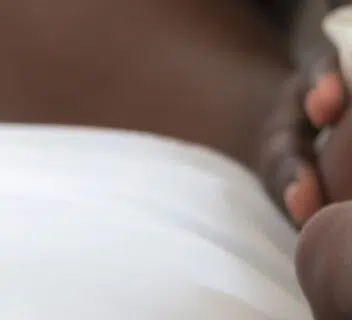Brachial Plexus Lawsuit: Your Guide to Legal Action & Compensation
If a brachial plexus injury occurs when the nerves are compromised during birth due to medical errors, you may have grounds to file a lawsuit. This guide will help you understand the injury, causes, steps to filing a brachial plexus lawsuit, and potential compensation. Learn how to seek legal justice and support for your child’s recovery.
Key Takeaways
- Brachial plexus injuries, often resulting from complications during childbirth, can lead to significant physical impairments and require extensive rehabilitation for affected children.
- Medical malpractice, such as improper use of delivery tools and failure to respond to complications, is a primary cause of brachial plexus injuries, necessitating legal action for accountability and compensation.
- Filing a brachial plexus lawsuit promptly is crucial to seek justice for a child’s injuries. It provides families with financial support for medical expenses and ongoing care, while ensuring that negligent medical providers are held responsible for their actions.
Understanding Brachial Plexus Injuries

The brachial plexus consists of five critical nerves that connect the spinal cord to the arm, essential for managing movement and feeling in the shoulder, arm, and hand. A brachial plexus injury can result in a spectrum of nerve damage from mild to severe. Common symptoms include weakness or paralysis in affected areas such as the arm, hand, or shoulder, a limp limb presentation along with persistent tingling sensations or pain.
Such injuries may dramatically hinder a child’s capacity to carry out daily activities and could lead to enduring discomfort while necessitating comprehensive rehabilitation efforts. The extent of damage due to a brachial plexus nerve injury ranges across various degrees—from stretching and partial tears up to complete disconnection from the spinal cord. It is vital for early treatment that these indicators are recognized promptly—including reduced mobility in an arm, diminished strength when gripping objects, and lessened tactile sensation.
Comprehending how profoundly a child’s brachial plexus injury can impact their life underscores why it’s important they receive swift medical attention as well as legal advice where applicable. By addressing such injuries without delay, we ensure children have access to required therapies aimed at improving their overall well-being and long-term outcomes.
Types of Brachial Plexus Injuries at Birth
Brachial plexus injuries at birth can be classified into several types, each varying in severity and impact on the child. Understanding these distinctions is crucial for determining the appropriate treatment and legal action.
- Neurapraxia: This is the mildest form of brachial plexus injury, where the nerves are stretched but not torn. Children with neurapraxia often recover fully with minimal intervention.
- Neuroma: This type of injury occurs when the nerves are stretched and damaged, leading to the formation of scar tissue. The scar tissue can press on healthy nerves, causing pain and limiting function.
- Rupture: A more severe type of injury, where the nerves are torn apart. This often requires surgical intervention to repair the torn nerves and restore function.
- Avulsion: The most severe type of injury, where the nerves are torn from the spinal cord. This can result in permanent disability and may require complex surgical procedures, such as nerve grafts or transfers.
Each type of brachial plexus injury can have different effects on a child’s arm, hand, and shoulder, necessitating tailored treatment approaches. A birth injury lawyer can help families understand the type and severity of their child’s brachial plexus injury and seek compensation for medical expenses and other damages.
Causes of Brachial Plexus Injuries at Birth
During the process of childbirth, brachial plexus injuries can arise, typically due to challenging labor and delivery conditions. Elevated risks for such injuries, including those specific to brachial plexus birth injuries, are associated with factors like the size of the newborn being large, breech presentations during delivery, and scenarios involving multiple births. The improper application of tools like vacuum extractors or forceps in assisted deliveries may also contribute to harm.
Improper use of delivery tools can lead to severe brachial plexus injury, requiring extensive medical intervention.
In instances where labor is difficult or extended over time, medical intervention using instruments such as forceps or extractors might be required. If these tools are used with excessive force by practitioners, it could lead to significant nerve injury within the brachial plexus area. A history of similar injuries from past deliveries may increase risk levels in future pregnancy.
A number of these incidents affecting the brachial plexus at birth can potentially be avoided and often stem from lapses in competence among medical professionals during labor and delivery procedures. When healthcare providers adhere strictly to best practices and effectively manage arising complications, they greatly diminish the chances of such trauma. This underlines an obligation on the part of institutions to ensure accountability when negligence occurs amongst their staff.
Medical Malpractice and Brachial Plexus Injuries
Many brachial plexus injuries are the result of medical malpractice. Careless actions during childbirth, such as overly aggressive tugging or incorrect application of delivery instruments, can lead to serious nerve damage. These avoidable errors by healthcare professionals greatly contribute to the incidence of harm involving the brachial plexus nerves.
Brachial plexus injuries can be caused by various clinical mistakes.
- Postponed cesarean sections
- Overlooking or not properly addressing signs of fetal distress
- Applying undue force on an infant’s arms in a breech birth
- Misusing birthing tools like forceps may tear an infant’s brachial plexus nerves and potentially cause permanent disabilities.
It is essential to call out healthcare providers for these negligent acts in order to deter instances of malpractice and guarantee fair compensation for impacted families. Taking legal steps enables these families to demand justice for their child’s suffering while encouraging enhanced care standards within the health profession.
Brachial plexus injury attorneys play a crucial role in guiding families through the legal process, fighting to secure compensation, and providing support through free consultations and contingency-fee structures.
Why File a Brachial Plexus Lawsuit?

Initiating a lawsuit concerning brachial plexus injuries can yield considerable financial and emotional relief for affected families. This legal pursuit aims to obtain compensation that addresses both tangible and intangible costs stemming from the injury, such as medical bills, therapeutic services, and continuous care needs. In instances where the damage is extensive or there are evident errors by healthcare providers, a brachial plexus injury settlement can provide substantial financial provision, offering significant support to impacted households.
Taking legal steps also promotes accountability among healthcare practitioners who were involved in causing harm through their actions or omissions. By filing a claim of this nature, families may experience feelings of vindication and closure after suffering due to acts of medical negligence inflicted upon their children.
It is essential for families considering litigation to act swiftly owing to specific statutory limitations set by states on initiating claims—these are known as statutes of limitations. Overlooking these time constraints can result in forfeiting one’s right to monetary recovery. Immediate action becomes paramount in procuring the necessary support for your child’s path toward healing.
Steps to Filing a Brachial Plexus Lawsuit
Initiating a lawsuit for brachial plexus birth injuries begins with an essential meeting with a birth injury lawyer. In this initial encounter, families have the opportunity to present the specifics of their incident, examine various legal avenues, and assess the strength of their case. The attorney will provide insights into how claims are processed and map out what is needed to seek financial redress. This legal process aims to secure brachial plexus injury compensation to cover medical expenses and ongoing care for the affected child.
Amassing substantial evidence forms the backbone of any compelling legal claim, which necessitates collecting all relevant medical documents, securing assessments from medical experts, and amassing accounts from witnesses. Once these pieces of evidence are in hand, one can proceed with formally filing the suit by delivering a complaint against those responsible that lays bare both the nature of your child’s suffering and your allegations against them.
Initial Consultation with a Birth Injury Lawyer
Arranging a no-cost consultation with a birth injury lawyer is the initial action in instituting a brachial plexus lawsuit. In this first gathering, families are able to disclose their case specifics, explore possible legal routes, and assess the strength of their claim. The discussion during the consultation will illuminate the procedure for filing claims and detail what is required to seek financial restitution.
Having an experienced birth injury attorney at your side can provide critical insight into the complexities of your legal matter while assisting family members in grasping both their rights and available choices. This preliminary encounter lays down a foundation for cooperative and supportive advocacy, aimed at ensuring that families are well-informed and feel empowered as they navigate through each stage of their legal challenge.
Contact 1-800-THE-LAW2 today for a free consultation with a birth injury lawyer in our professional network.
Gathering Evidence for Your Case
Accumulating relevant evidence is vital for fortifying a robust brachial plexus lawsuit. This includes securing comprehensive medical records, obtaining the assessments of experts in the field, and gathering accounts from witnesses—all critical elements that shed light on the specifics of the injury and corroborate cause and expected outcomes.
In this intricate process, birth injury lawyers are instrumental in aiding their clients through evidence collection and scrutiny to ensure they substantiate the assertions within their legal action. Their expertise enables thorough preparation that’s imperative for crafting an effective argument which enhances chances of achieving a favorable result on behalf of affected families. Thus underlining why many choose to engage these specialized attorneys.
Filing the Lawsuit
Initiating a legal action for a brachial plexus injury involves presenting the defendant with an official complaint. This statement specifies the particulars of the child’s condition, and accusations directed at the defendant, and outlines the damages being pursued. Prior to submitting this complaint, gathering all relevant evidence to substantiate your claims is essential.
Adhering to the statute of limitations is critical. Overlooking this time limit can result in an immediate rejection of your lawsuit. Timely submission and fulfillment of all judicial prerequisites enable families to proceed with their injury lawsuit for brachial plexus damage and pursue rightful compensation.
Brachial Plexus Lawsuit Deadlines
The statute of limitations for filing a brachial plexus lawsuit varies by state, typically ranging from 2 to 5 years from the date of the injury. However, in some states, the statute of limitations may be extended for minors, allowing them to file a lawsuit until their 18th or 21st birthday.
It is essential to consult with a birth injury lawyer as soon as possible to determine the applicable statute of limitations and ensure that the lawsuit is filed on time. Failing to file a lawsuit within the statute of limitations can result in the loss of the right to seek compensation for the child’s injuries.
A birth injury lawyer can help families navigate the complex legal process and ensure that their rights are protected. By acting promptly, families can safeguard their legal options and work towards securing the compensation needed for their child’s recovery and future well-being.
The Legal Process: What to Expect
Going through a brachial plexus lawsuit can be an extended endeavor, frequently extending over several months or possibly stretching across years before reaching a resolution. Being aware of the different stages within this legal procedure is beneficial for families to equip themselves and maintain awareness during their pursuit.
Notable segments of the process include the discovery period, discussions aimed at settlement, and potentially progressing toward trial. These phases are instrumental in constructing the case robustly, campaigning for just recompense, and striving earnestly to attain redress for injuries sustained by the child.
Discovery Phase
During the discovery phase, the objective is to gather all relevant information related to the case that can bolster each party’s legal stance. During this period, both parties engage in sharing data and evidence through various means such as interrogatories, documentation exchange, and conducting depositions of witnesses.
In a brachial plexus lawsuit, witness testimony is instrumental in constructing a robust argument. Settlement discussions typically commence after the completion of the discovery phase. This offers an opportunity for both sides to negotiate potential settlements with the aim of reaching compensation agreements without proceeding to a court trial.
Settlement Negotiations
Negotiations for a settlement are conducted with the goal of achieving an equitable resolution to recompense for damages and injury. Settlements out of court are typical in most lawsuits related to birth injuries, such as those involving brachial plexus injuries, hence negotiations frequently occur.
The willingness of both sides to reach a settlement is significantly affected by how convincingly liability can be demonstrated through evidence. In these negotiation processes, attorneys work on behalf of the plaintiff to protect and advocate for their rights and interests.
Going to Trial
Should a settlement fail to materialize, the brachial plexus injury lawsuit advances to trial. Here, the decision rests with either a judge or jury who will consider all of the evidence presented by both parties. This includes witness testimony and legal reasoning brought forth during proceedings.
The primary aim of such trials is to establish fault in cases involving brachial plexus injuries and obtain monetary damages for those affected. Although it’s common for most lawsuits related to brachial plexus injuries to conclude with settlements outside of court, grasping how trials function remains crucial for instances where they are inevitable.
Compensation for Brachial Plexus Injuries
Financial recompense for brachial plexus injuries encompasses funds for healthcare costs, rehabilitation therapy, and sustained care needs. Should the child’s injury result from medical negligence, families might be eligible to obtain compensation for a brachial plexus injury that is crucial in supporting their child’s recuperation and long-term prosperity.
Initiating a lawsuit pertaining to a brachial plexus issue serves not only to procure financial aid but also imposes responsibility on negligent healthcare practitioners. The monetary settlements provided can defray expenses arising from the injury, such as surgeries required for correction and ongoing life-long caregiving expenditures. This form of compensation is instrumental in ensuring that children impacted by these injuries can access treatments essential to enhancing their living standards.
Factors Affecting Compensation Amounts
The compensation awarded in cases of brachial plexus injuries is influenced by multiple factors, with the injury’s severity and its enduring consequences on a child’s existence being foremost. Cases involving severe brachial plexus damage that necessitate widespread medical intervention and continuous caregiving often command greater settlements.
Additional considerations include the age at which the victim sustained the brachial plexus injury—bearing upon their lifelong care costs—and potential income losses for parents who might need to diminish working hours or cease employment altogether to provide necessary support for their offspring. Legal representatives meticulously assess each aspect of how the brachial plexus injury has affected family life when determining just compensation.
Average Settlements
In cases involving brachial plexus injuries, the typical settlement exceeds $1 million. A notable instance of such a high-value settlement occurred in Illinois in 2003 when a family was awarded $20 million as compensation for their daughter’s injury related to her brachial plexus. The amount received from a brachial plexus settlement can differ substantially based on individual case details.
When it comes to severe damage stemming from brachial plexus injuries, settlements often exceed the $1 million mark due to the substantial medical expenses and ongoing care required by those affected. Similarly, settlements resulting from permanent impairments caused by birth-related medical mistakes are anticipated to reach or exceed $1 million as well.
Treatment Options for Brachial Plexus Injuries
Treatment strategies for brachial plexus injuries consist of immobilization, engaging in physical therapy, and potentially undergoing surgical procedures to mend or graft the affected nerves. In cases involving children with such injuries, physical therapy is crucial to sustain mobility in their joints and avert the onset of rigidity.
For more grave nerve damage within the brachial plexus, patients might require operative interventions like nerve transplantation or neurotisation surgeries. These advanced surgical techniques aim at linking healthy nerves with those impaired to expedite muscular activation and rehabilitate functional abilities.
Managing pain is vital due to its potential to induce chronic discomfort that can significantly diminish a child’s overall quality of life following serious brachial plexus trauma.
Long-Term Effects of a Brachial Plexus Injury at Birth
A brachial plexus injury at birth can have long-term effects on a child’s arm, hand, and shoulder, including chronic pain, numbness, limited mobility, and weakness or paralysis. These injuries can also lead to decreased sensation and feeling in the affected areas, significantly impacting the child’s quality of life.
In some cases, a brachial plexus injury at birth can also lead to secondary conditions, such as:
- Contractures: Permanent shortening of the muscles and tendons in the affected arm or hand, leading to stiffness and limited movement.
- Deformities: Abnormal shape or position of the affected arm or hand, which can affect function and appearance.
- Arthritis: Inflammation and degeneration of the joints in the affected arm or hand, causing pain and further limiting mobility.
A birth injury lawyer can help families seek compensation for the long-term effects of a brachial plexus injury at birth, including medical expenses, lost wages, and pain and suffering damages. Early intervention and treatment can help improve outcomes for children with brachial plexus injuries, and a birth injury lawyer can help families access the resources and support they need.
By advocating for their child’s rights and interests, families can ensure they receive the compensation and support they deserve, helping to improve their child’s quality of life and future prospects.
Choosing a Qualified Birth Injury Lawyer

Choosing an experienced birth injury lawyer is essential for a favorable outcome in a brachial plexus lawsuit. A lawyer who has successfully handled brachial plexus injury cases can greatly affect the case’s result. Families struggling with the impacts of birth injuries receive both emotional and financial support from an empathetic attorney during the course of legal proceedings. If you need help, it’s advisable to seek expertise from attorneys who specialize in brachial plexus injuries.
For complex birth injury cases, it’s important to have a lawyer equipped with ample resources and connections to specialists within the field. It is also vital for clients to experience clear and regular communication, which ensures they remain well-informed and at ease throughout every phase of their legal journey.
Summary
To summarize, injuries to the brachial plexus can significantly alter a child’s quality of life. Comprehending legal avenues empowers families to obtain the necessary funds and assistance. Identifying signs and causes of such trauma is as imperative as maneuvering through judicial procedures and acquiring suitable treatment in pursuit of an optimal outcome for the impacted youngster.
Initiating a lawsuit related to a brachial plexus birth injury serves not just in procuring monetary aid for recuperation, but also emphasizes holding responsible medical practitioners accountable, thus potentially deterring future negligence. Selecting an adept birth injury attorney coupled with prompt legal measures enables families to champion their children’s entitlements while aiming for improved prospects ahead.
Frequently Asked Questions
Common symptoms of a brachial plexus injury in infants include weakness or paralysis in the arm, a limp arm, and persistent tingling or pain.
These signs indicate the need for prompt medical evaluation and intervention.
Brachial plexus injuries during childbirth are primarily caused by difficult labor, the use of assisted delivery methods such as vacuum or forceps, the birth of a large baby, breech delivery, and multiple births.
Understanding these risk factors can help in managing and mitigating potential complications.
Medical malpractice can result in brachial plexus injuries through negligence in childbirth, including excessive pulling, improper use of delivery instruments, or delays in performing cesarean sections, which can cause severe nerve damage.
It is important to file a brachial plexus lawsuit promptly to ensure that you meet the statutory deadlines set by your state; failing to do so can result in the loss of your right to seek compensation.
Taking timely action protects your interests and preserves your legal options.
Financial recompense for brachial plexus injuries Compasses the costs associated with medical treatment, rehabilitation therapy, sustained care provisions, surgical interventions to correct issues, and expenses related to chronic care management.
Securing this monetary assistance is crucial in meeting the diverse requirements of persons who have suffered from these types of injuries.




